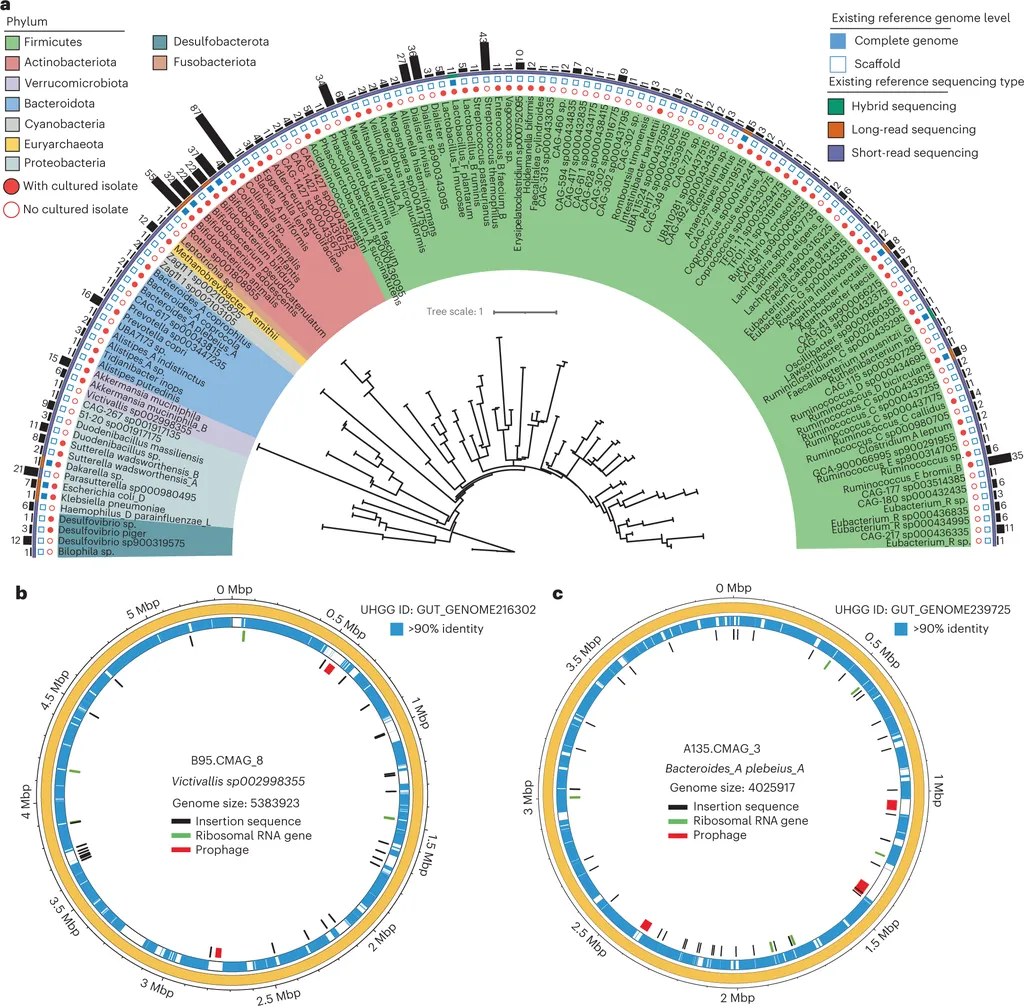In the intricate ecosystem of the human gut, a microscopic powerhouse named *Bifidobacterium adolescentis* has been making waves. This prevalent gut bacterium, known for its probiotic prowess, has recently been the subject of a groundbreaking study led by Pei Fu from the Key Laboratory of Dairy Biotechnology and Engineering at Inner Mongolia Agricultural University. The research, published in the journal *Foods* (translated as “食品”), delves into the genetic diversity and adaptive evolution of *B. adolescentis* across geographically distinct human populations, offering insights that could reshape our understanding of gut health and potentially open new avenues in the energy sector.
The study, which analyzed 543 *B. adolescentis* genomes, revealed significant genetic variations among populations from Asia, Europe, and North America. “We found notable differences in genome size and GC content among these regions,” Fu explained. This genetic diversity is not just a footnote in the annals of microbiology; it’s a testament to the bacterium’s adaptability and its potential to influence host health in diverse ways.
One of the most compelling findings was the open structure of the *B. adolescentis* pan-gene, indicating substantial genetic diversity within the species. This diversity is mirrored in the abundance of carbohydrate-active enzymes (CAZys) that the bacterium possesses, which are crucial for carbohydrate degradation and transformation. The study identified population-specific CAZys, suggesting that *B. adolescentis* has evolved to adapt to distinct regional dietary patterns.
So, what does this mean for the energy sector? The gut microbiome is increasingly recognized as a potential goldmine for bioenergy production. Understanding the genetic diversity and functional capabilities of *B. adolescentis* could pave the way for developing more efficient biofuels. “The adaptive evolution of *B. adolescentis* highlights its potential as a versatile tool in bioenergy applications,” Fu noted. By harnessing the bacterium’s ability to break down complex carbohydrates, researchers could unlock new methods for converting agricultural waste into clean energy.
Moreover, the study’s findings could have significant implications for the food industry. Probiotics are already a booming market, and understanding the genetic diversity of *B. adolescentis* could lead to the development of more targeted and effective probiotic strains. This could not only improve gut health but also enhance the nutritional value of food products.
The research also underscores the importance of comparative genomics in understanding the adaptive evolution of gut bacteria. By exploring the genetic background variations and functional gene differences across geographically diverse populations, scientists can gain a deeper understanding of how these microbes influence host health. This knowledge could be instrumental in developing personalized nutrition and health strategies tailored to different populations.
In conclusion, the study by Fu and colleagues is a significant step forward in our understanding of *B. adolescentis* and its potential applications. As we continue to explore the complexities of the gut microbiome, the insights gained from this research could shape the future of bioenergy, food production, and personalized health. The journey has just begun, and the possibilities are as vast as the genetic diversity of *B. adolescentis* itself.

